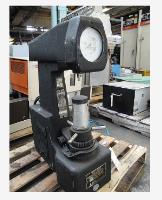 Add My Company
Add My Company
Sign In
Steel – How Hard Is It, Really?
03-02-2017

By Rob Ellis | 20th December, 2016
Steel is practically a synonym for strength and it’s surprising how many different situations make use of it. You can have steely determination, steel yourself against misfortune, have a mind as sharp as a steel trap and have nerves of steel. We can say, quite definitively, that we recognise that steel can be made strong and hard.
The question is, however, with the number of different types of steel out there, which ones are suitable for your engineering project? Even under the term ‘steel’ there are a mind-boggling array of different specifications and characteristics, some of which are more designed and suitable to withstand particular conditions.
The question remains; you know what you need your steel to do but how do you go about quantifying whether it’s suitable and will withstand the conditions? Well, put quite simply, you test it and there are three very common tests to measure the hardness of various steels.
Firstly, there’s the Brinell Hardness Test. This is a simple test of deformation under pressure, where a hardened steel ball, usually one about 1cm across, is indented onto the surface of the test steel. After 15 seconds, the indentation made from the 500kgf, 1500kgf or 3000kgf load is then measured and a hardness value is calculated based on its diameter. The Brinell test is very useful, as it measures a sustained and applied pin point weight, giving reliable and accurate results. It’s less useful for tubular products that have thin walls or small scale diameters. It’s also not uncommon for the Brinell test to use a smaller, 5mm ball under a load of 750kgf.
For more information on Steel – How Hard Is It, Really? talk to West Yorkshire Steel Co Ltd
Enquire Now
List your company on FindTheNeedle.

